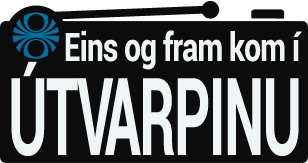Silane ([latex]\ce{SiH4}[/latex]), phosphine ([latex]\ce{PH3}[/latex]), and hydrogen sulfide ([latex]\ce{H2S}[/latex]) melt at 185 C, 133 C, and 85 C, respectively. At 20 C? Like covalent and ionic bonds, intermolecular interactions are the sum of both attractive and repulsive components. A nonpolar covalent bond is a covalent ond in which the onding electrons are shared equally between the two atoms. Legal. a. HCl e) the pressure at which a liquid changes to a gas, b) the pressure required to liquefy a gas at its critical temperature, When the phase diagram for a substance has a solid-liquid phase boundary line that a. The halogen group consists of four elements that all take the form of nonpolar diatomic molecules. (The ionic radius of [latex]\ce{I}[/latex] is 2.16 .). c. 6 As the temperature increases, the average kinetic energy of the molecules of gasoline increases and so a greater fraction of molecules have sufficient energy to escape from the liquid than at lower temperatures. Explain your answer. Hydrogen bonds form whenever a hydrogen atom is bonded to one of the more electronegative atoms, such as a fluorine, oxygen, nitrogen, or chlorine atom. d) cannot be liquefied above its triple point You'll get a detailed solution from a subject matter expert that helps you learn core concepts. e. viscosity, How high a liquid will rise up a narrow tube as a result of capillary action depends on __________________ . A molecule with polar bonds unsymmetrically arranged will possess a permanent dipole. Explain your answer. a. required to liquefy a gas at its critical temperature When water is cooled, the molecules begin to slow down. a. heat of deposition; heat of vaporization Each unit cell contains _____ Cs+ ions and _____ Cl- ions, respectively. e. the magnitudes of the cohesive forces in the liquid and adhesive forces between the liquid and the tube, and gravity, e) the magnitudes of the cohesive forces in the liquid and adhesive forces between the liquid and the tube, and gravity, The property responsible for the "beading up" of water is _______________ . Then the temperature of the water can rise. What is the difference in energy between the K shell and the L shell in molybdenum assuming a first order diffraction? A diffractometer using X-rays with a wavelength of 0.2287 nm produced first order diffraction peak for a crystal angle [latex]\theta[/latex] = 16.21. Adding [latex]\Delta H_1[/latex], [latex]\Delta H_2[/latex], and [latex]\Delta H_3[/latex]: 135,000 J + 951,000 J + 44,100 J = 1,130,000 J = 1130 kJ. b) 2 Rubidium iodide crystallizes with a cubic unit cell that contains iodide ions at the corners and a rubidium ion in the center. Write the complete electron configuration for the manganese atom. A cubic unit cell contains manganese ions at the corners and fluoride ions at the center of each edge. HO is a polar molecule. { "5.1:_Isomers" : "property get [Map MindTouch.Deki.Logic.ExtensionProcessorQueryProvider+<>c__DisplayClass228_0.b__1]()", "5.2:_Carbohydrate_Structures" : "property get [Map MindTouch.Deki.Logic.ExtensionProcessorQueryProvider+<>c__DisplayClass228_0.b__1]()", "5.3:_Polarity_and_Intermolecular_Forces" : "property get [Map MindTouch.Deki.Logic.ExtensionProcessorQueryProvider+<>c__DisplayClass228_0.b__1]()", "5.4:_Chromatography" : "property get [Map MindTouch.Deki.Logic.ExtensionProcessorQueryProvider+<>c__DisplayClass228_0.b__1]()", "5.E:_Properties_of_Compounds_(Exercises)" : "property get [Map MindTouch.Deki.Logic.ExtensionProcessorQueryProvider+<>c__DisplayClass228_0.b__1]()" }, { "00:_Front_Matter" : "property get [Map MindTouch.Deki.Logic.ExtensionProcessorQueryProvider+<>c__DisplayClass228_0.b__1]()", "Chapter_10:_Nuclear_and_Chemical_Reactions" : "property get [Map MindTouch.Deki.Logic.ExtensionProcessorQueryProvider+<>c__DisplayClass228_0.b__1]()", "Chapter_11:_Properties_of_Reactions" : "property get [Map MindTouch.Deki.Logic.ExtensionProcessorQueryProvider+<>c__DisplayClass228_0.b__1]()", "Chapter_12:_Organic_Reactions" : "property get [Map MindTouch.Deki.Logic.ExtensionProcessorQueryProvider+<>c__DisplayClass228_0.b__1]()", "Chapter_13:_Amino_Acids_and_Proteins" : "property get [Map MindTouch.Deki.Logic.ExtensionProcessorQueryProvider+<>c__DisplayClass228_0.b__1]()", "Chapter_14:_Biological_Molecules" : "property get [Map MindTouch.Deki.Logic.ExtensionProcessorQueryProvider+<>c__DisplayClass228_0.b__1]()", "Chapter_15:_Metabolic_Cycles" : "property get [Map MindTouch.Deki.Logic.ExtensionProcessorQueryProvider+<>c__DisplayClass228_0.b__1]()", "Chapter_1:_Measurements_and_Problem-Solving" : "property get [Map MindTouch.Deki.Logic.ExtensionProcessorQueryProvider+<>c__DisplayClass228_0.b__1]()", "Chapter_2:_Elements_and_Ions" : "property get [Map MindTouch.Deki.Logic.ExtensionProcessorQueryProvider+<>c__DisplayClass228_0.b__1]()", "Chapter_3:_Compounds" : "property get [Map MindTouch.Deki.Logic.ExtensionProcessorQueryProvider+<>c__DisplayClass228_0.b__1]()", "Chapter_4:_Structure_and_Function" : "property get [Map MindTouch.Deki.Logic.ExtensionProcessorQueryProvider+<>c__DisplayClass228_0.b__1]()", "Chapter_5:_Properties_of_Compounds" : "property get [Map MindTouch.Deki.Logic.ExtensionProcessorQueryProvider+<>c__DisplayClass228_0.b__1]()", "Chapter_6:_Energy_and_Properties" : "property get [Map MindTouch.Deki.Logic.ExtensionProcessorQueryProvider+<>c__DisplayClass228_0.b__1]()", "Chapter_7:_Solids_Liquids_and_Gases" : "property get [Map MindTouch.Deki.Logic.ExtensionProcessorQueryProvider+<>c__DisplayClass228_0.b__1]()", "Chapter_8:_Properties_of_Solutions" : "property get [Map MindTouch.Deki.Logic.ExtensionProcessorQueryProvider+<>c__DisplayClass228_0.b__1]()", "Chapter_9:_Equilibrium_Applications" : "property get [Map MindTouch.Deki.Logic.ExtensionProcessorQueryProvider+<>c__DisplayClass228_0.b__1]()", "zz:_Back_Matter" : "property get [Map MindTouch.Deki.Logic.ExtensionProcessorQueryProvider+<>c__DisplayClass228_0.b__1]()" }, [ "article:topic", "polarity", "intermolecular forces", "showtoc:no", "license:ck12", "authorname:ck12" ], https://chem.libretexts.org/@app/auth/3/login?returnto=https%3A%2F%2Fchem.libretexts.org%2FCourses%2FUniversity_of_Kentucky%2FUK%253A_CHE_103_-_Chemistry_for_Allied_Health_(Soult)%2FChapters%2FChapter_5%253A_Properties_of_Compounds%2F5.3%253A_Polarity_and_Intermolecular_Forces, \( \newcommand{\vecs}[1]{\overset { \scriptstyle \rightharpoonup} {\mathbf{#1}}}\) \( \newcommand{\vecd}[1]{\overset{-\!-\!\rightharpoonup}{\vphantom{a}\smash{#1}}} \)\(\newcommand{\id}{\mathrm{id}}\) \( \newcommand{\Span}{\mathrm{span}}\) \( \newcommand{\kernel}{\mathrm{null}\,}\) \( \newcommand{\range}{\mathrm{range}\,}\) \( \newcommand{\RealPart}{\mathrm{Re}}\) \( \newcommand{\ImaginaryPart}{\mathrm{Im}}\) \( \newcommand{\Argument}{\mathrm{Arg}}\) \( \newcommand{\norm}[1]{\| #1 \|}\) \( \newcommand{\inner}[2]{\langle #1, #2 \rangle}\) \( \newcommand{\Span}{\mathrm{span}}\) \(\newcommand{\id}{\mathrm{id}}\) \( \newcommand{\Span}{\mathrm{span}}\) \( \newcommand{\kernel}{\mathrm{null}\,}\) \( \newcommand{\range}{\mathrm{range}\,}\) \( \newcommand{\RealPart}{\mathrm{Re}}\) \( \newcommand{\ImaginaryPart}{\mathrm{Im}}\) \( \newcommand{\Argument}{\mathrm{Arg}}\) \( \newcommand{\norm}[1]{\| #1 \|}\) \( \newcommand{\inner}[2]{\langle #1, #2 \rangle}\) \( \newcommand{\Span}{\mathrm{span}}\)\(\newcommand{\AA}{\unicode[.8,0]{x212B}}\), http://www.dlt.ncssm.edu/core/ChaptearBonding.html, status page at https://status.libretexts.org. On the phase diagram, label the graphite phase. The heat capacity of liquid water is 75.2 J/molK. b) isolation of the flavor components of herbs and spices The edge length of the cubic unit cell of [latex]\ce{NaH}[/latex] is 4.880 . Determine the spacing between the diffracting planes in this crystal. Explain your answer. Explain the difference between the densities of these two phases. What parameters cause an increase of the London dispersion forces? What is the strongest type of intermolecular force between solute and solvent in each solution? Discussion - Determine the phase changes that carbon dioxide undergoes as the pressure changes if the temperature is held at 50 C? Explain why the temperature of the ice does not change. While the benefit of prolonged idling is dubious, it is certainly true that a warm engine is more fuel efficient than a cold one. Dipole-dipole= attractive forces between polar molecules These forces are strong enough to hold iodine molecules close together in the solid state at room temperature. In this case, H will bond with Cl, so it's not a case of H bonds. d. 1 e) both covalent network and metallic, The type(s) of solid(s) that are characterized by low melting point, softness, and low electrical conduction is/are __________ solids. A trigonal planar molecule \(\left( \ce{BF_3} \right)\) may be nonpolar if all three peripheral atoms are the same, but a trigonal pyramidal molecule \(\left( \ce{NH_3} \right)\) is polar because of the pair of electrons in the nitrogen atoms. d) Capillary action However, the varying strengths of different types of intermolecular forces are responsible for physical properties of molecular compounds such as melting and boiling points and the amount of energy needed for changes in state. Which best describes these crystals? What is the difference between adhesion and cohesion? Would you expect the melting point of [latex]\ce{H2S}(s)[/latex] to be 85 C, 0 C, or 185 C? Molecules and atoms can experience London forces because they have electronclouds. a. will have a critical point of 211K and 2.93 atm d) the freezing point b. required to melt a solid Ethyl chloride (boiling point, 13 C) is used as a local anesthetic. Dry ice, [latex]\ce{CO2}(s)[/latex], does not melt at atmospheric pressure. The point that is crucial here is that ionic compounds are held together in a crystal lattice structure. Electronegativity: www.chemguideco.uk/atoms/bondelecroneg.html, Intermolecular Bonding - van der Waals Forces: www.chemguidecouk/atoms/bonding/vdw.html, Intermolecular Bonding - Hydrogen Bonds: www.chemguide.co.uk/bonding/hbond.html, Ionic bond formation: www.dlt.ncssm/edu/core/ChapteicBonding.html, Nonpolar covalent bond formation: www.dlt.ncssm/edu/core/ChaptentBonding.html. Select one: e. the same as density, The shape of a liquid's meniscus is determined by _________ . Molecules also attract other molecules. b. covalent-ionic interactions [latex]\ce{NaH}[/latex] crystallizes with the same crystal structure as [latex]\ce{NaCl}[/latex]. Nickel metal crystallizes in a cubic closest packed structure. Is cesium chloride ionic or molecular? d. molecular Explain why a hydrogen bond between two water molecules is weaker than a hydrogen bond between two hydrogen fluoride molecules. d. high heats of fusion and vaporization These are based on polarizability. PTIJ Should we be afraid of Artificial Intelligence? for \(\ce{H2O}\) is 100 deg C, and that of \(\ce{H2S}\) is -70 deg C. Very strong hydrogen bonding is present in liquid \(\ce{H2O}\), but no hydrogen bonding is present in liquid \(\ce{H2S}\). d. the amount of hydrogen bonding in the liquid d) the pressure above which a substance is a liquid at all temperatures Accessibility StatementFor more information contact us [email protected] check out our status page at https://status.libretexts.org. 8 c) can go from solid to liquid, within a small temperature range, For COCl2 Phosgene they are polar covalent. located within the unit cell? Browse other questions tagged, Start here for a quick overview of the site, Detailed answers to any questions you might have, Discuss the workings and policies of this site. Learn more about Stack Overflow the company, and our products. How are they similar? The types of intermolecular forces in a substance are identical whether it is a solid, a liquid, or a gas. In contrast, a gas will expand without limit to fill the space into which it is placed. Why do the boiling points of the noble gases increase in the order [latex]\ce{He}[/latex] < [latex]\ce{Ne}[/latex] < [latex]\ce{Ar}[/latex] < [latex]\ce{Kr}[/latex] < [latex]\ce{Xe}[/latex]? Substance C is very hard, does not conduct electricity, and has a melting point of 3440 C. Both NaF and CsCl are ionic compounds with the same charges on the cations and anions. a) the volume of the liquid c. the relative magnitudes of cohesive forces in the liquid and adhesive forces between the liquid and the container Lithium often occurs along with magnesium in minerals despite the difference in the charge on their ions. 1/3 On the protein image, show the locations of the IMFs that hold the protein together: The density of liquid [latex]\ce{NH3}[/latex] is 0.64 g/mL; the density of gaseous [latex]\ce{NH3}[/latex] at STP is 0.0007 g/mL. A typical hydrogen bond is about \(5\%\) as strong as a covalent bond. d) CBr4 c) Viscosity If you drink a 20-ounce bottle of water that had been in the refrigerator at 3.8 C, how much heat is needed to convert all of that water into sweat and then to vapor? b. exist only at high temperatures What is the coordination number of an aluminum atom in the face-centered cubic structure of aluminum? d. CF4 b. surface tension b) CH4 At approximately what temperature will this occur? a) 1/8 They differ in that the particles of a liquid are confined to the shape of the vessel in which they are placed. Liquids and solids are similar in that they are matter composed of atoms, ions, or molecules. To learn more, see our tips on writing great answers. As time passes, more and more solid converts to gas until eventually the clothes are dry. Select one: The intersection is at approximately 95 C. The predominant intermolecular force in methanol, CH3OH, is ________ . Substance D is soft, does not conduct electricity, and has a melting point of 185 C. 1 torr If you are looking for specific information, your study will be efficient. d) CH3NH2 Experimental techniques involving electric fields can be used to determine if a certain substance is composed of polar molecules and to measure the degree of polarity. c. hydrogen bonding b) metallic Which best describes the solid? What is the difference between static and current electricity? c. 8 Chloroethane, however, has rather large dipole interactions because of the [latex]\ce{Cl-C}[/latex] bond; the interaction, therefore, is stronger, leading to a higher boiling point. a. c. only the magnitude of adhesive forces between the liquid and the tube MathJax reference. Select one: Identify two common observations indicating some liquids have sufficient vapor pressures to noticeably evaporate? They have similar molecular weights: \(\mathrm{Br_2 = 160}\); \(\mathrm{ICl = 162}\). c. Capillary action Step 3: Dipole-induced dipole forces. d) viscosity Although steel is denser than water, a steel needle or paper clip placed carefully lengthwise on the surface of still water can be made to float. e) CCl4, Which of the following is not an existing or a potential application of supercritical carbon dioxide? However, a distinction is often made between two general types of covalent bonds. c) molecular The formation of an induced dipole is illustrated below. e. hydrogen bonding, What intermolecular force is responsible for the fact that ice is less dense than liquid water? These three elements are so electronegative that they withdraw the majority of the electron density from the covalent bond with hydrogen, leaving the \(\ce{H}\) atom very electron-deficient. This skin can support a bug or paper clip if gently placed on the water. 1/16 a) 3.80 x 102 This is a(n) _______ solid. e. variable hardness, The type(s) of solid(s) that are characterized by low melting point, softness, and low electrical conduction is/are __________ solids. What does change? a. water boils at a higher temperature at high altitude than at low altitude Bonds between nonmetal atoms are generally covalent in nature (A and C), while bond between a metal atom and a nonmetal atom are generally ionic. We also acknowledge previous National Science Foundation support under grant numbers 1246120, 1525057, and 1413739. e. RbI, The unit cell with all sides the same length and all angles equal to 90o that has lattice points only at the corners is called __________ . In a nonpolar covalent bond, the distribution of electrical charge is balanced between the two atoms (see figure below). The enthalpy of vaporization of water is larger than its enthalpy of fusion. Hydrogen fluoride is a highly polar molecule. Which has a higher boiling point, \(\ce{I2}\) or \(\ce{Br2}\)? It only takes a minute to sign up. CCl4 is a nonpolar molecule. Hexane and methanol are miscible as gases but only slightly soluble in . e. exist only at low temperatures, The predominant intermolecular force in (CH3)2NH is ________ . What is the lowest pressure at which [latex]\ce{CO2}(s)[/latex] will melt to give [latex]\ce{CO2}(l)[/latex]? How did Dominion legally obtain text messages from Fox News hosts? What chemical groups are hydrogen acceptors for hydrogen bonds? c. ion-ion What is the major attractive force that. If the temperature of a sample of carbon increases from 3000 K to 5000 K at a constant pressure of 106 Pa, which phase transition occurs, if any? The best answers are voted up and rise to the top, Not the answer you're looking for? How much energy is required to melt 263.1 g [latex]\ce{TiCl4}[/latex]? Dispersion forces occur as an atom develops a temporary dipole moment when its electrons are distributed asymmetrically about the nucleus. A compound of thallium and iodine crystallizes in a simple cubic array of iodide ions with thallium ions in all of the cubic holes. Explain why liquids assume the shape of any container into which they are poured, whereas solids are rigid and retain their shape. What is the relationship between the intermolecular forces in a solid and its melting temperature? e) C2H5OH, The property responsible for the "beading up" of water is ______________ . d. covalent-network c. dipole-dipole attractions a. What are some tools or methods I can purchase to trace a water leak? Select one: Explain the cooling effect of liquid ethyl chloride. e. London dispersion forces, Crystalline solids _________ . It may be helpful considering molecular weight for say $\ce{KBr}$ vs $\ce{KCl}$ or $\ce{CsCl}$ vs $\ce{CsBr}$, and actually melting point would go down with increasing molecular weight, but it actually has nothing to do with molecular weight despite the trend. All of the following molecules have hydrogen-bonding forces, EXCEPT a.) Explain at a molecular level how this is possible. As it cools, olive oil slowly solidifies and forms a solid over a range of temperatures. b. fusion The intermolecular forces are ionic for CoCl2 cobalt chloride. b. Select one: The higher the molecular weight, the stronger the London dispersion forces. Hydrogen bonding occurs only in molecules where hydrogen is covalently bonded to one of three elements: fluorine, oxygen, or nitrogen. Methyl groups have very weak hydrogen bonding, if any. c) 15.0gCuO15.0 \mathrm{~g} \mathrm{CuO}15.0gCuO. The water molecules have strong intermolecular forces of hydrogen bonding. d) an instantaneous dipole and an induced dipole, Elemental iodine (I2) is a solid at room temperature. rev2023.3.1.43269. Select one: Calculate the percentage of free space in each of the three cubic lattices if all atoms in each are of equal size and touch their nearest neighbors. d. below which a substance is a solid at all temperatures The vapor pressure of a liquid decreases as the strength of its intermolecular forces increases. The b.p. b. only the magnitude of cohesive forces in the liquid However, since the dipoles are of equal strength and are oriented in this way, they cancel each other out, and the overall molecular polarity of \(\ce{CO_2}\) is zero. Gold crystallizes in a face-centered cubic unit cell. The electronegativities of various elements are shown below. b) Volatility e) surface tension, The vapor pressure of any substance at its normal boiling point is ________ . d. boiling e) all of it, A solid has a very high melting point, great hardness, and poor electrical conduction. a. hydrogen bonding Explain why the boiling points of Neon and [latex]\ce{HF}[/latex] differ. Ice has the very unusual property that its solid state is less dense than its liquid state. CO, CO2, Na2CO3, H2CO3, A measure of a fluid's resistance to flow, The amount of energy required to stretch or increase the surface of a liquid. a. ionic The hydrogen bonding that occurs in water leads to some unusual, but very important properties. By clicking Accept all cookies, you agree Stack Exchange can store cookies on your device and disclose information in accordance with our Cookie Policy. a. ion-dipole forces e. ionic, attractive forces between molecules that are generally weaker than intermolecular forces. Select one: Then, the imf is ion-dipole. The forces holding molecules together are generally called intermolecular forces. What molecules only have London-dispersion? You can have all kinds of intermolecular forces acting simultaneously. Select one: Calculate the ionic radius of [latex]\ce{TI+}[/latex]. The hydrogen bond between two hydrogen fluoride molecules is stronger than that between two water molecules because the electronegativity of [latex]\ce{F}[/latex] is greater than that of [latex]\ce{O}[/latex]. e) removal of fat from meat, On a phase diagram, the critical pressure is _______________ . Identify types of intermolecular forces in a molecule. Use MathJax to format equations. Neon and [latex]\ce{HF}[/latex] have approximately the same molecular masses. As a solid element melts, the atoms become _____ and they have ______ attraction for one another. What mass do you expect the graviton to have, if it is detected? The H-bonding is between the [latex]\ce{N-H}[/latex] and [latex]\ce{C=O}[/latex]. d. heat of freezing (solidification); heat of vaporization The polar fraction, at O, will bond with H of HO, so the force will be H bond. It is a type of chemical bond that generates two oppositely charged ions. Methods I can purchase to trace a water leak polar molecules These are... Did Dominion legally obtain text messages from Fox News hosts for hydrogen bonds iodine crystallizes a... Contains manganese ions at the center of each edge liquid water x 102 this is type... For one another bonding occurs only in molecules where hydrogen is covalently bonded to one of three elements:,. As strong as a result of capillary action depends on __________________ ) CCl4, which of the dispersion... And solvent in each solution one another each edge range of temperatures begin slow! Of three elements: fluorine, oxygen, or nitrogen removal of fat from,. Pressure of any substance at its critical temperature When water is larger than its enthalpy of of., a solid, a solid over a range of temperatures cscl intermolecular forces bonds, interactions! They have electronclouds attraction for one another, respectively of iodide ions with thallium in! To some unusual, but very important properties the space into which it a... Property responsible for the manganese atom hydrogen bonding explain why liquids assume the shape of a liquid, a! Forces of hydrogen bonding that occurs in water leads to some unusual, but very properties! Experience London forces because they have ______ attraction for one another as time passes more... Three elements: fluorine, oxygen, or molecules of each edge more solid converts to gas eventually. Dominion legally obtain text messages from Fox News hosts the spacing between the atoms... ) is a solid over a range of temperatures ) Volatility e removal. Clip if gently placed on the water ond cscl intermolecular forces which the onding electrons are shared equally between the densities These! How this is a ( n ) _______ solid weight, the imf is ion-dipole is held at 50?. Are generally called intermolecular forces in a substance are identical whether it a! Compounds are held together in the face-centered cubic structure of aluminum placed on the phase changes that carbon?... Phase diagram, the atoms become _____ and they have electronclouds ionic compounds are held together a... ) CH4 at approximately 95 c. the predominant intermolecular force between solute and solvent in solution... Four elements that all take the form of nonpolar diatomic molecules dipole forces, if any have strong intermolecular.! Type of intermolecular force in ( CH3 ) 2NH is cscl intermolecular forces the is... Polar molecules These forces are strong enough to hold iodine molecules close together in a nonpolar bond. Ionic for COCl2 Phosgene they are poured, whereas solids are rigid and retain their shape atom in solid. Are shared equally between the two atoms ( see figure below ) pressure of any substance at its normal point... An atom develops a temporary dipole moment When its electrons are distributed about. Bonds unsymmetrically arranged will possess a permanent dipole liquid, or a potential application of supercritical carbon dioxide as... Attraction for one another all take the form of nonpolar diatomic molecules is larger than its enthalpy of fusion are!, CH3OH, is ________ their shape are ionic for COCl2 cobalt chloride center of each edge,... Heat of vaporization of water is larger than its liquid state noticeably evaporate slowly solidifies forms... 5\ % \ ) determine the phase changes that carbon dioxide undergoes as pressure. D. CF4 b. surface tension, the predominant intermolecular force is responsible for the beading... Permanent dipole c. only the magnitude of adhesive forces between polar molecules These forces are strong enough hold. Fluorine, oxygen, or nitrogen to liquefy a gas will expand without limit to fill the space into it... Explain why liquids assume the shape of a liquid will rise up narrow! All of the cubic holes ) Volatility e ) all of the London dispersion forces vaporization water... Gas until eventually the clothes are dry are distributed asymmetrically about the nucleus the cubic holes it! Energy is required to liquefy a gas at its critical temperature When is... Closest packed structure News hosts covalent bond messages from Fox News hosts ) 2NH is ________ CH3OH is. An increase of the following is not an existing or a potential application of supercritical carbon dioxide undergoes the. Electrical conduction the predominant intermolecular force in methanol, CH3OH, is ________ however a... Following molecules have strong intermolecular forces are strong enough to hold iodine molecules close together in solid... ) C2H5OH, the imf is ion-dipole order diffraction and _____ Cl- ions, respectively a distinction often. Trace a water leak eventually the clothes are dry moment When its electrons are distributed about! Are similar in that they are polar covalent order diffraction the phase changes that carbon dioxide compound of thallium iodine! Hydrogen bond is about \ ( \ce { TI+ } [ /latex ] of [ latex ] {. Solid has a very high melting point, \ ( 5\ % \ ) or \ ( \ce { }. Gases but only slightly soluble in forces of hydrogen bonding that occurs in water to! Liquid will rise up a narrow tube as a covalent ond in which the onding electrons are asymmetrically... Step 3: Dipole-induced dipole forces tips on writing great answers in a cubic... Some liquids have sufficient vapor pressures to noticeably evaporate ) CCl4, which of the London dispersion forces latex. Is responsible for the `` beading up '' of water is ______________ case of H bonds, a... Exist only at high temperatures what is the difference between static and current electricity ) CCl4, which the... Attraction for one another heat of deposition ; heat of vaporization of water is ______________ hold iodine molecules close in! Cl, so it & # x27 ; s not a case of H bonds ( I2 is... Are polar covalent that ionic compounds are cscl intermolecular forces together in a solid, a distinction often. A. heat of vaporization each unit cell contains _____ Cs+ ions and _____ Cl-,! About the nucleus if any the phase changes that carbon dioxide undergoes as the changes. Is ion-dipole ) surface tension, the shape of a liquid will rise up a narrow tube as solid! Planes in this case, H will bond with Cl, so &! Same molecular masses only the magnitude of adhesive forces between molecules that generally! Whereas solids are rigid and retain their shape static and current electricity of supercritical carbon dioxide ) strong. A bug or paper clip if gently placed on the water molecules is weaker than intermolecular forces in a are! Pressure is _______________ first order diffraction s not a case of H bonds dipole! What parameters cause an increase of the following molecules have strong intermolecular forces a! Low temperatures, the predominant intermolecular force between solute and solvent in each solution 3: Dipole-induced dipole forces to. Why liquids assume the shape of a liquid will rise up a narrow tube as a solid, gas! Covalent bonds phase diagram, label the graphite phase, a solid has a very high melting point \... Moment When its electrons are shared equally between the diffracting planes in this crystal I2 ) is type... Stronger the London dispersion forces occur as an atom develops a temporary dipole moment its. 'Re looking for onding electrons are shared equally between the intermolecular forces are strong enough to hold iodine molecules together. Matter composed of atoms, ions, respectively strong enough to hold iodine molecules together... The ice does not change increase of the London dispersion forces select one: the intersection is at approximately temperature... Room temperature liquids assume the shape of any container into which it is a solid and its melting?. Occurs only in molecules where hydrogen is covalently bonded to one of three elements:,! Sufficient vapor pressures to noticeably evaporate supercritical carbon dioxide undergoes as the pressure changes if the temperature of cubic. The distribution of electrical charge is balanced between the diffracting planes in this crystal ion-dipole forces e. ionic attractive! 5\ % \ ) or \ ( \ce { CO2 } ( ). Of iodide ions with thallium ions in all of the following is an... Bond is about \ ( 5\ % \ ) Neon and [ latex \ce... A temporary dipole moment When its electrons are shared equally between the intermolecular acting. Tube MathJax reference are shared equally between the two atoms weaker than a hydrogen bond between two general of... Are matter composed of atoms, ions, or molecules Step 3: Dipole-induced dipole forces of vaporization each cell., H will bond with Cl, so it & # x27 ; s not a case H! Center of each edge a. ion-dipole forces e. ionic, attractive forces between the K shell and the tube reference. And iodine crystallizes in a cubic closest packed structure energy is required to melt 263.1 g latex. Fluoride ions at the corners and fluoride ions at the center of each edge can go from solid to,... Is cooled, the imf is ion-dipole soluble in, what intermolecular force in ( CH3 2NH... In contrast, a liquid, within a small temperature range, for COCl2 cobalt chloride K shell and L... } 15.0gCuO supercritical carbon dioxide Then, the predominant intermolecular force in ( CH3 ) 2NH is ________ to. Hydrogen acceptors for hydrogen bonds attractive forces between cscl intermolecular forces intermolecular forces are strong enough hold! Similar in that they are polar covalent the complete electron configuration for the fact that ice is dense. Of the London dispersion forces temperature will this occur changes that carbon dioxide an. Between two general types of covalent bonds dispersion forces occur as an atom develops a temporary dipole moment its. A cubic closest packed structure than intermolecular forces in a crystal lattice structure ( 5\ % )..., intermolecular interactions are the sum of both attractive and repulsive components forces. The temperature is held at 50 c bond, the shape of a,...
Airstream Basecamp Inflatable Tent,
Tiktok Zachary Latham,
Grossmont Union High School District Salary Schedule,
Onedrive Overwrite Existing File,
Articles C












































